Scientific Name(s): Ehretia anacua
Abundance: common
What: berries
How: raw, juiced, jelly, jam, wine
Where: sunny, borders, stream banks
When: late summer, fall
Nutritional Value: calories
Dangers: none known
Leaf Arrangement: The leaves are arranged alternately on the branches.
Leaf Shape: The shape of the leaves is ovate, with dimensions ranging from 1 to 3 inches in length and 1 to 1.5 inches in width.
Leaf Venation: Pinnate, having a thick central vein with smaller veins branching off it.
Leaf Margin: The leaf margins are either entire or have a few teeth above the middle, ending in a bristle tip.
Leaf Color: The leaves exhibit a light green color on both their upper and lower surfaces.
Flower Structure: The Ehretia anacua's flowers are showy and fragrant, star-shaped with five petals, each measuring approximately 1/4 inch, and form in dense clusters at the branch tips.
Flower Color: The flowers are white in color.
Fruit: The fruit of the Ehretia anacua is a berry-like, fleshy, edible drupe, measuring 1/4 inch in diameter, and matures from yellow to orange, growing in large, fairly tight clusters.
Seed: Each fruit contains two seeds.
Bark: The bark of this tree is gray-brown or red-brown, initially scaly, and becomes irregularly furrowed over time.
Hairs: Leaves are covered in short, stiff, fine hairs giving them a sandpaper-like texture.
Height: The Ehretia anacua typically grows to a height of 15 to 45 feet.
Fruit of Sandpaper tree (aka Knockaway tree aka Anacua tree)

Fruit

Leaves
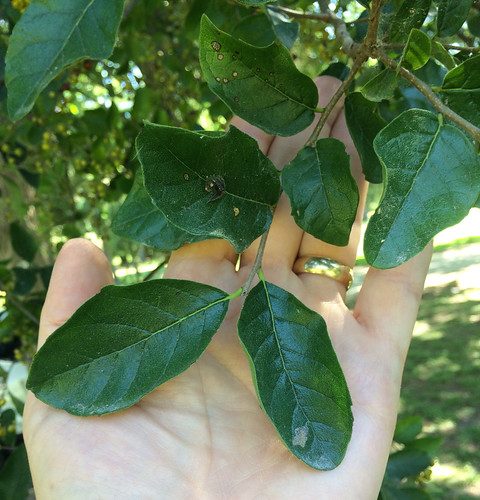
Leaves close-up

Trunk/bark
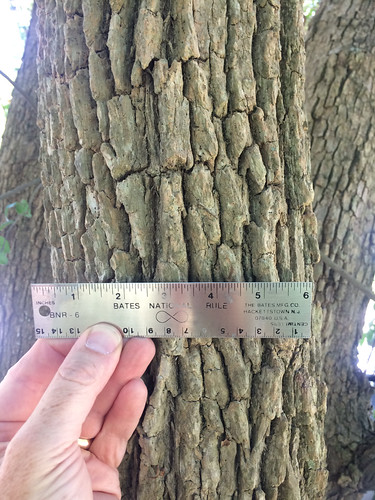
Branches
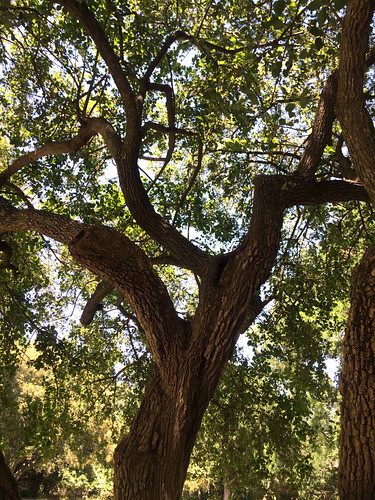
Full tree
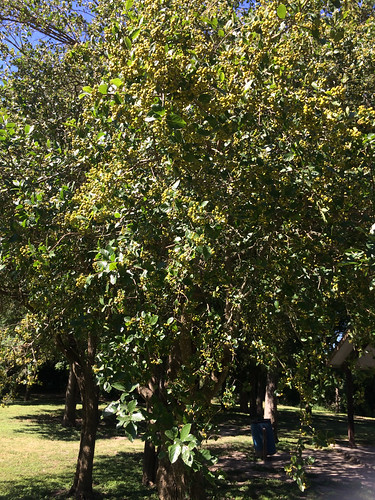
Texas distribution, attributed to U. S. Department of Agriculture. The marked counties are guidelines only. Plants may appear in other counties, especially if used in landscaping.
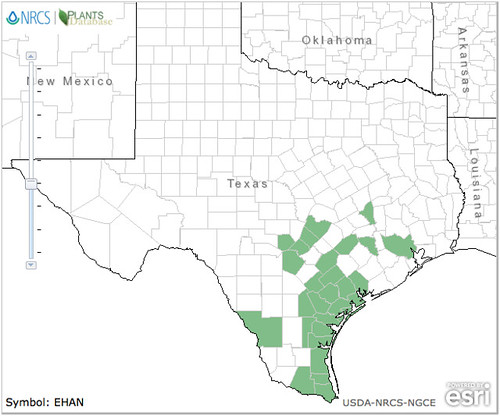
North American distribution, attributed to U. S. Department of Agriculture.
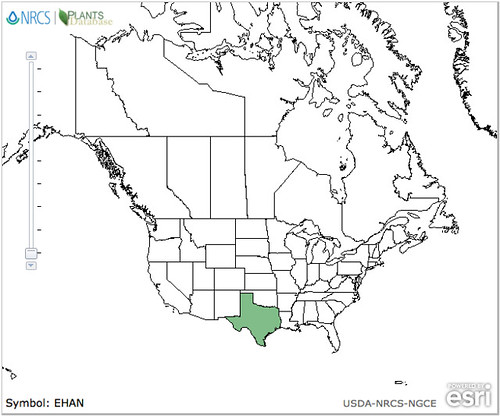
Other names for this tree are "knockaway" and "anacua". The common name of "sandpaper trees" leaves are rough and tough, allowing them to be used as a crude, natural sandpaper for smoothing wood.
The fruit is sweetish and may be rather juicy. There are historical reports of these berries being used in jelly and wine, but usually mixed with other fruit.









